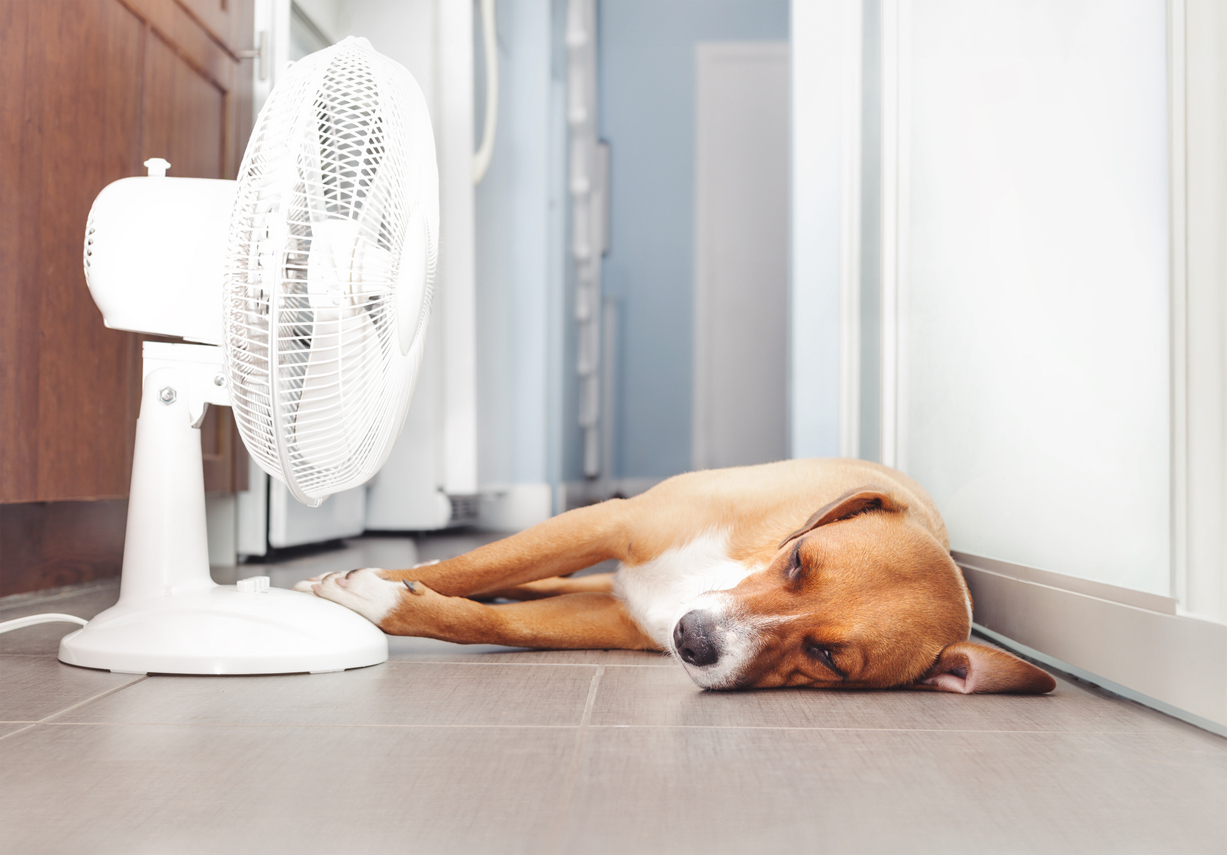With the summer heat in Spring Creek, Nevada, protecting your pets and farm animals from the dangers of heatstroke is crucial. The high desert climate here means hot daytime temperatures and low humidity, creating conditions where animals can quickly become overheated and dehydrated. Our expert team will provide essential tips and guidance to ensure your beloved animals stay cool, comfortable, and safe throughout the hot summer months. Let’s explore how to prevent heatstroke and keep your pets and farm animals healthy in our summer weather.
Pets Prone to Heatstroke
Heatstroke can affect any pet, but some are more prone to it due to their physiology, coat type, and behavior. Here are pets that are particularly susceptible to heatstroke:
Dogs
- Brachycephalic Breeds: Breeds with short noses and flat faces, such as Bulldogs, Pugs, Boxers, and Shih Tzus, have difficulty panting effectively, which impairs their ability to cool down.
- Thick-Coated Breed: Dogs with dense fur, like Huskies, Malamutes, and Newfoundlands, can overheat more easily.
- Overweight Dog: Excess weight can make it harder for dogs to regulate their body temperature.
- Older Dogs: Senior dogs might have less efficient thermoregulation.
- Very Active Dogs: Breeds or individual dogs that are very active or excitable, such as Border Collies and Australian Shepherds, might overexert themselves in hot weather.
- Symptoms of heatstroke in dogs:Excessive panting, drooling, lethargy, vomiting, diarrhea, collapsing.
Cats
- Brachycephalic Breeds: Cats with flat faces, like Persians and Hymalayans, can struggle with heat regulation.
- Long-Haired Breeds: Cats with long, thick fur, such as Maine Coons, Ragdolls, Persians, and Hymalayans are at higher risk.
- Symptoms of heatstroke in cats:Panting, bright red tongue, very red or pale gums, drooling, salivating, restlessness (cats may pace), vomiting, diarrhea (possibly with blood).
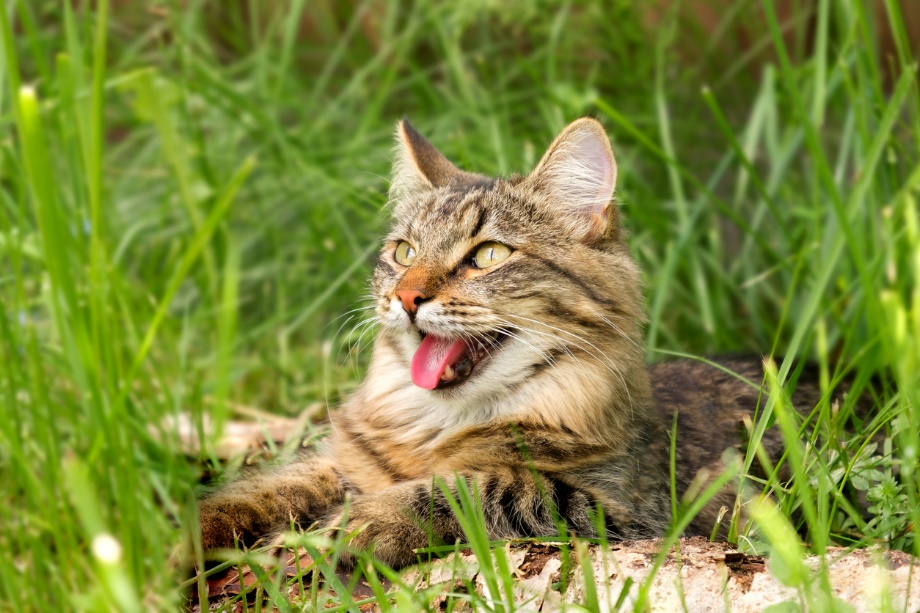
It is important to note that cats do not typically pant. Panting in cats is commonly caused by overheating as cats try to cool down. Panting in cats can also be caused by stress or anxiety, vigorous play, or a medical problem such as heart or respiratory problems. If your cat usually does not pant, but is panting on a hot day, follow the steps below for overheating. Note:If your cat pants frequently or shows other symptoms, it’s important to consult one of our veterinarians.
Take Immediate Action if You Suspect Your Pet is Overheating
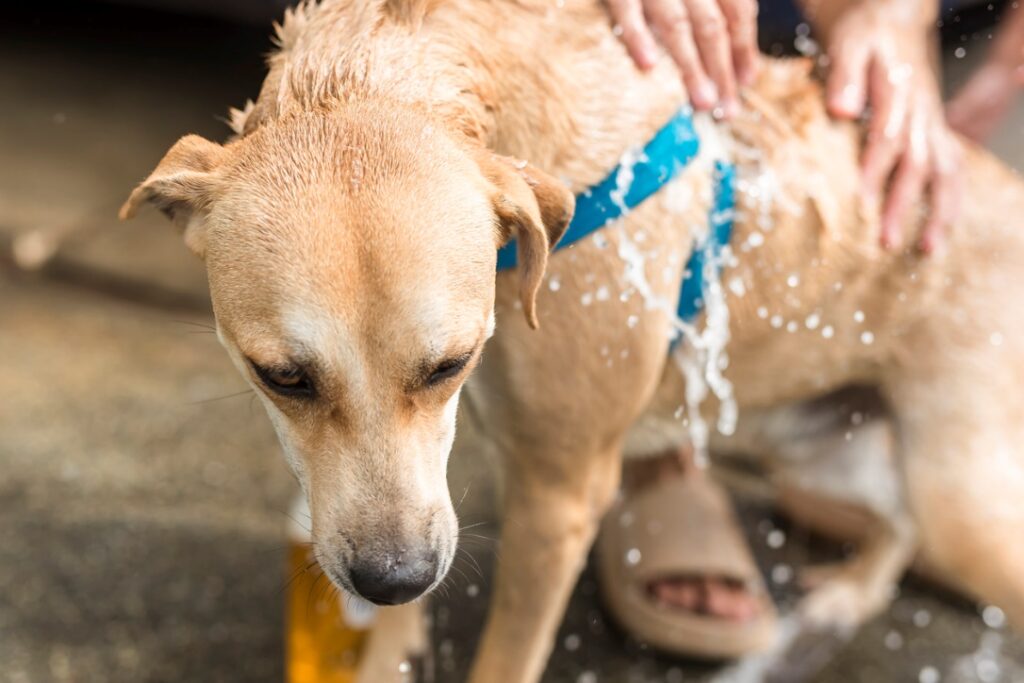
If your pet is showing signs of overheating, take immediate action to cool them down and ensure their safety:
- Move to a Cool Area: Take your pet to a cool place indoors or to the shade if outside.
- Provide Water: Offer your pet fresh, cool (not cold) water to drink. Encourage small sips rather than gulping. When your pet is overheated, drinking very cold water or ice water can cause your pet’s blood vessels to constrict, potentially worsening the situation by hindering heat dissipation. Cold or ice water can also cause stomach cramps or other stomach problems.
- Cool Them Down: Wet their bodies with cool (not cold) water. Wet towels can be placed on their necks, under their armpits, and between their hind legs. You can also gently pour cool water over their bodies.
- Use Fans or Air Conditioning: To help lower your pet’s body temperature, place them in front of a fan or in an air-conditioned room.
- Monitor Their Temperature: If possible, use a rectal thermometer to monitor their temperature. Dogs and cats’ normal temperature is around 101-102.5°F (38.3-39.2°C). If a dog or cat’s temperature is above 104°F (40°C), it’s an emergency.
- Limit Activity: Encourage your pet to rest and avoid physical activity.
- Call Your Veterinarian Immediately:Call Aspen Vet Clinic or an Emergency Vet Hospital during our closed hours. Veterinary intervention is crucial to cool down the pet rapidly, assess for any internal damage, and provide supportive care such as intravenous fluids. Delay in treatment can worsen the condition rapidly, so quick action by a veterinarian can significantly improve the pet’s chances of recovery and reduce long-term health impacts.
Preventing Heatstroke: Keeping Pets Cool in Hot Weather
Walking Your Pet
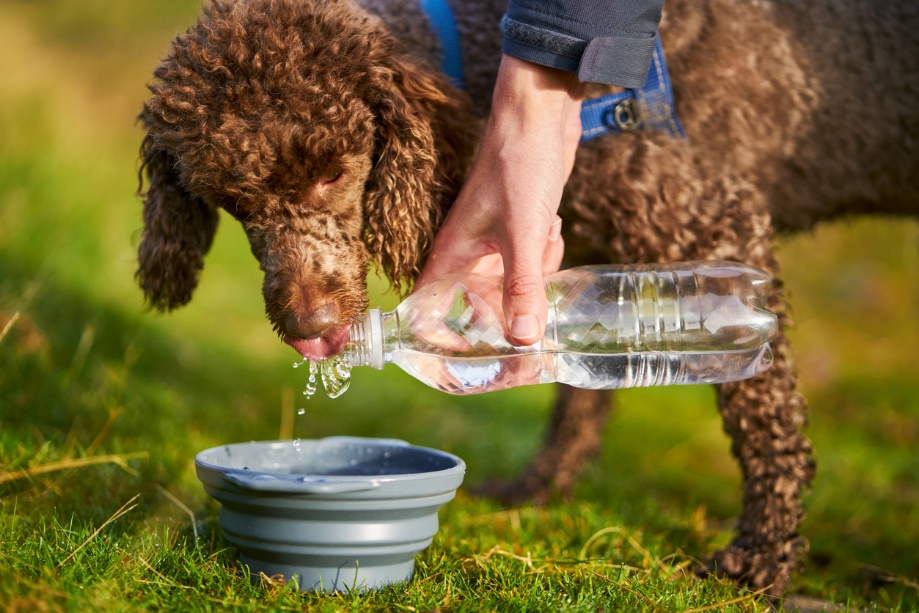
- Walk your pet in the cooler hours of the morning or late evening.
- Check pavement temperature. Make sure it is not too hot for your pet to walk on. If you wouldn’t walk barefoot on the pavement, it is too hot for your pet! You can protect their paws with pet-friendly booties.
- Choose shaded routes if you can.
- Bring water and a collapsable bowl for your pet. Offer water to your pet frequently.
- Know your pet’s limits. Take shorter walks on hotter days.
To learn more about preventing heatstroke in brachycephalic dogs read our previous post 8 Tips for Preventing Heat Stroke in Short-Muzzled Dogs
Traveling with Pets in Hot Weather
- Never leave your pet unattended in a car, even for a short period. Even with the windows cracked, the temperature inside a vehicle can rise rapidly, leading to heatstroke and potential death.
- Plan for frequent breaks: If you’re going on a long drive, plan for frequent breaks to allow your pet to stretch their legs and hydrate. Look for pet-friendly rest stops, restaurants, and parks where your pet can safely take a break.
- Use sunshades and air conditioning: Sunshades on the windows block direct sunlight, especially if your pet travels in a crate or carrier. Ensure that the air conditioning is working correctly and set to a comfortable temperature for your pet.
Traveling with pets during hot weather requires extra planning and precautions. Always prioritize their safety and comfort throughout the journey.
Please watch the video from the Weather Channel about protecting children and pets from hot cars.
Tips for Keeping Pets Cool Indoors
Providing your pets with a cool and comfortable indoor environment is crucial when the temperature and humidity rise. Here are some tips to help you keep your pets cool indoors:
- Keep the air flowing: Open windows, use fans or turn on the air conditioning to ensure proper ventilation in your home.
- Create a cool area for your pet: Set up an area in your home where your pet can retreat when it needs to cool down. This area could be a room with tiles or a cool spot near a fan or air conditioning vent. Place a comfortable bed or mat in this area for your pet.
- Provide access to fresh water: Make sure your pet has access to fresh, cool water at all times. Cats especially prefer flowing water. Consider investing in a pet water fountain to encourage hydration.
Remember, pets can suffer from heatstroke even indoors, so always monitor them and take necessary precautions to keep them cool and comfortable.
Creating a Cool Outdoor Space for Pets and Outdoor Animals
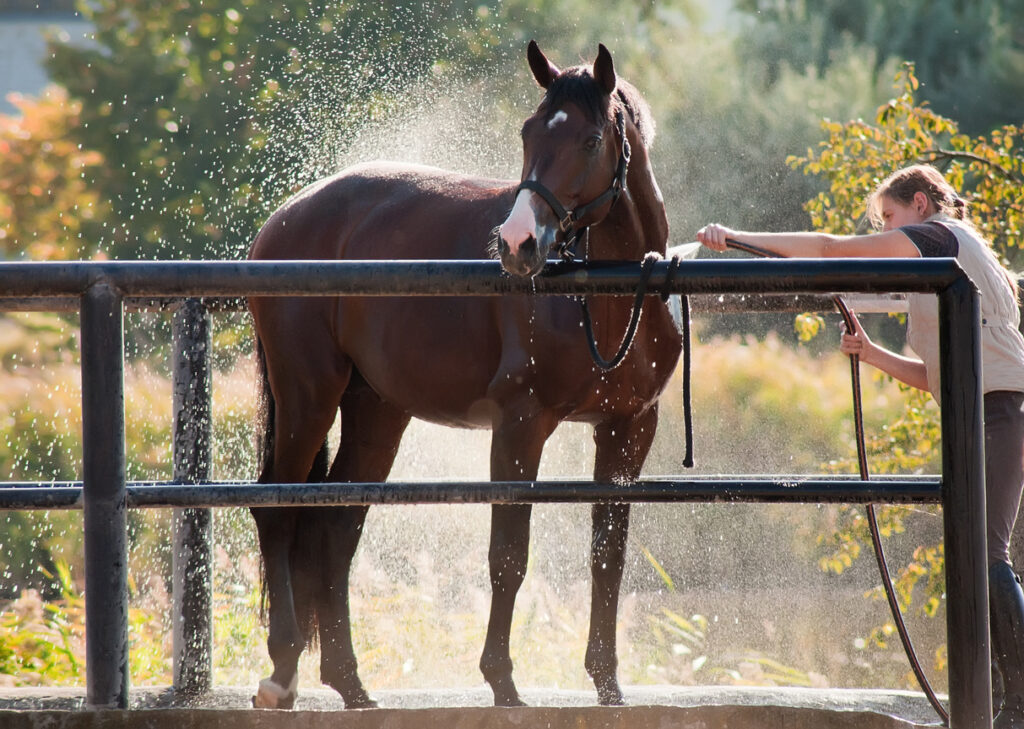
- Shade is essential: Ensure that your outdoor space has plenty of shade, especially during the hottest parts of the day. Trees, umbrellas, or a covered patio could provide this. Animals must have a shaded area to seek refuge from the sun.
- Avoid hot surfaces: Hot pavement, concrete, and metal surfaces can burn your pet’s paws. Before allowing your pet outside, test the temperature of the ground with your hand. If it’s too hot for you to keep your hand on, it’s too hot for your pet. Choose grassy areas if you can.
- Provide cool spots to relax: Set up a comfortable outdoor shaded area where your pet can relax and cool down. You can also provide a shallow pool or a sprinkler for them to play in and cool off.
- Always provide fresh water: As mentioned earlier, ensure your pet and animals can always access fresh, cool water. Change the water frequently to keep it clean and refreshing. Consider placing multiple water bowls in the outdoor space to encourage drinking.
- Monitor water intake: Monitor your pet’s water intake. It could indicate dehydration if you notice your pet or farm animals drinking less than usual.
For more information on protecting horses and livestock from summer heat, please check out the following links:
Horses:Caring for Horses During Hot Weather.
Livestock: 9 Tips to Help Your Livestock Beat the Summer Heat
Conclusion: Preventing Heatstroke in Pets and Farm Animals
Safeguarding pets and farm animals from heatstroke requires proactive measures and vigilant care. By understanding the risks posed by hot weather, particularly to particular breeds, you can take steps to ensure their safety and comfort. Providing ample fresh water, creating cool indoor and outdoor spaces, and adjusting exercise routines are essential. Whether walking your dog in the early morning or setting up shaded areas for your livestock, these precautions can prevent heat-related illnesses and keep your animals healthy during the warmer months. Remember, a few simple steps can significantly protect your beloved pets and farm animals from the dangers of heatstroke. Do not hesitate to contact Aspen Vet Clinic with any concerns or for further advice. Your animals’ well-being is our top priority.
Your Caring Team
Aspen Veterinary Clinic

